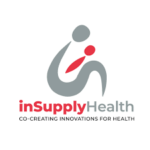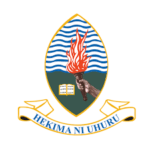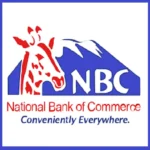Overview
OR for HR-MIS Development at CRS
Terms of Reference
HUMAN RESOURCE MANAGEMENT INFORMATION SYSTEM DEVELOPMENT FOR DEVELOPMENT OF COLOUNSENUTH
Crs Catholic Relief Services’ Background Registered internationally, USCCB (CRS) is a non-profit.
Without regard to race, creed, or nationality, CRS works in more than 100 countries to rescue, protect, and transform life in need. Programs of emergency response, HIV, health, agriculture, education, microfinance, and peacebuilding help CRS to achieve relief and development.
1.1 Overview of COUNSENUTH
Established in 1998 with its main office in Dar es Salaam, the national non-governmental, non-profit Centre for Counselling, Nutrition and Health Care (COUNSENUTH) is Through creative, reasonably priced, evidence-based actions that strengthen positive behaviours and practices with active community participation, COUNSENUTH aims to raise the quality of life of underprivileged populations. The Centre has been dedicated to its Mission for more than 25 years and has actively made concrete progress and a difference with gender equality and women empowerment, youth life skills, education performance improvement and employability, as well as climate-responsive health and nutrition programming to improve the wellbeing of the people of Tanzania, especially women, children, adolescents, youth and other most vulnerable groups.
Target
On behalf of its partner company COUNSENUTH, CRS would want to contract a respected company to consult and create a Human Resource Management Information Systems (HRMIS). This program should be made to enable the company to effectively handle staff data and simplify HR processes. Fundamentally, HRMIS is a centralised database for storing and access to employee data including contract management, contact details, remuneration, benefits, attendance records, performance reviews, and more. By using a Human Resource Management Information System (HRMIS), the Center’s HR operations will be much enhanced and strategic insights into organisation personnel management will be unlocked.
DOWNLOAD THE Complete TENDER NOTES HERE
Terms for the human resource management information system (HRMIS) development from Technical Specifications and Requirements
2.1.1 System Based on Clouds
A vendor will host the HR-MIS (software), which will be available via web browsers and mobile devices thereby guaranteeing users’ flexibility and accessibility.
2.1.2 Module on Core HR
An essential part of HR systems, the basic HR module keeps data on interns and staff members. It will act as a hub for tasks relevant to the HR system overall, including security and reporting. Many times, HR staff members utilise this module everyday to locate or update data.
The consultant should give some thought to the following main characteristics:
- One centralised database instead of several databases;
- All the required employee/intern/volunteer information—name, address, emergency contacts, salary, position, department—will be handled.
- Role-based security helps to streamline the distribution of employee access privileges.
- Supported for both future and past dated entries
2.1.3. Absence, Attendance, and Time
Usually featuring absences (i.e. leave), capture hours worked, and overtime hours worked on a time sheet, the system should fit Centre policies and procedures. The system ought to possess the following elements:
- Give each employee’s absences configurable capability.
- Create time sheets documenting the necessary data, including project accounts to be charged, hours worked, overtime, absence and priorities against accomplishments.
- Set eligibility criteria and indicate the number of days annually by defining statutory holidays.
- Turn on automatic forfeiture of unused holiday rights at the conclusion of the designated cycle.
- Approval procedures and reminders for completed time sheets and absence requests will help.
- Provide a system to record where staff members spend their time—training, meetings, conferences, projects or programs to guide HR priorities against organisational priorities.
- Request and approve automated leaves.
- Track several forms of leave: yearly, sick, maternity, paternity, compassionate, etc.
- Give a concise summary of historical and current leave balances.
2.1 4. Recruiting Module
The module on recruitment should address the whole process of locating and employing fresh staff. Important characteristics to have include the following:
- A job library with a job description and pertinent job level, type of work, salary range, and vital information about the employment.
- Workflow for customisable staff requisition forms and offer-approval.
- Simple procedure for uploading open jobs to several websites and social media.
- Applications automatically filtered according on pre-defined criteria including certificates, years of experience, qualifications, or other job-specific needs.
- Managers hired for viewing and rating candidates and adding remarks have specific purposes.
- Support several offer templates to fulfil particular requirements of the company.
- Support for the whole offer process—including electronic returning signed offers, applicant signatures, and offer sending.
- Search for jobs online using postings and applications.
- Support for sophisticated digital signatures akin to what DocuSign provides.
- Capacity to add offers’ attachments.
- Capacity to interact with basic office tools including calendar and email.
- Easy distribution of consistent messages to inactive applicants.
2.1 2.5 Onboarding
An onboarding module presents a good first impression and improves the onboarding experience for new employees. New employees use the onboarding module, at least, to finish forms and review procedures. The system should give thought to the following:
- Easy procedure for transferring fresh graduates from recruiting to onboarding.
- Customised landing page enabling adding infographics, movies, and organisational data.
- Forms and policies let staff members quickly finish and sign.
- Newcomers can access and finish all required documentation before their first day.
- Task lists and timetables for all engaged in the onboarding process.
- Create a central library to keep formal acknowledgement documents and onboarding paperwork.
2.1.6 Offboarding Module
- The module will handle staff leaving.
- Simplify clearance policies and exit interviews.
- Automated alerts for HR staff members and managers
- Monitoring of last payments, advantages, and document submission
2.1 7 Control of Performance
- Whatever the performance management strategy, the Centre would want to take into account the following essential HR software capabilities:
- Access to performance reviews: staff member and supervisor.
- Customisable procedures for performance reviews
- concurrent filling of forms, therefore minimising the back-and-forth needed to finish the review procedure.
- Dashboards and reports allow one to monitor development and examine outcomes.
- Accessing Performance Improvement Plans (PIP) management forms under employee and supervisor direction
2.1.8 Worker Rewards
- Including a tool to record statutory and organizational-based employee benefits data can help to save a lot of time during open enrolment and onboarding.
- Benefit automated tracking and reporting
- Simple integration with the Dashboards, Analytics, and onboarding procedures 2.1
- As you examine HR software capabilities, give enough time for dashboards and reporting. Those skills are sometimes neglected till the very last point of view of a demonstration. Please give some thought to the following:
- Enough typical report forms to satisfy most purposes, Including general staff members reports full personal information, position, grade, pay, supervisor, location. Reports include approved and missing time sheets, leave balance, accrual and non-accrual, emergency contact records, performance
- Dashboards including graphs and charts to offer insightful analysis for action.
- Capacity to produce personalised dashboards and reports without too much effort.
- Regular emailing of reports and dashboards to particular staff members is scheduled.
- Limiting data access by use of role-based rights.
2.1.10 Education and Personal Development
The following are salient:
- Features enabling staff members to exchange courses taken and training/seminar attendance
- Features pointing to the training requirements for organisations
- Features reveal the learning session plans of organisations.
- Integration with performance management helps to connect knowledge with professional development.
2.1.11 HR/Self-Service Portal
- One major advantage of HR systems is the capacity to safely distribute data to managers and staff. Think on the following self-service capabilities:
- Employee self-service capability lets staff members examine and change their own data.
- Manager self-service tool allowing managers to access and change data regarding their immediate subordinates.
- Role-based rights to restrict sensitive data access.
- An approval procedure guarantees that modifications started by managers and staff are acceptable.
- Review HR records and ask for permissions.
2.1.12 Reward
- A decent compensation management system will avoid using spreadsheets and offers the following advantages:
- defined eligibility criteria for incentives and pay change. Provide a tool to create and control pay scales so that the company has consistent and open compensation systems all around.
- Approved procedures for pay changes
- To protect private data, include cutting-edge access control and data security tools into the HR system.
- To guarantee the confidentiality and integrity of staff and organisational data, this should cover encryption, role-based access rights, multi-factor authentication, frequent audits, and data protection rule compliance.
- Simple reporting helps one to grasp who will get a salary rise and how budgets are being allocated.
- Concurrent with Performance evaluations of pay decisions
- Capacity to schedule options and bonuses, among non-base-pay compensation components.
- Managerial and non-managerial, administrative and programmatic filters to view staff depending on several factors
2.1.13 Calibration & Grading
- Looking at calibration, the consultant should give the following factors some thought:
- Integration for grading with the performance management.
- Capacity to view staff members ranked on a nine-box grid or another grading system.
- Drag-and-drop controls let workers move from one rating to another.
- The program notes both the new and original rating.
- Filters by HR department, job title or job level to limit the number of employees shown.
2.1.14 Awards and Appreciation
- Giving staff members opportunities to acknowledge one another’s contributions increases employee involvement and helps to foster a culture of gratitude.
- When managers and staff meet to go over performance, the statistics can also be useful.
To apply for this job email your details to support@indeed.co.tz


